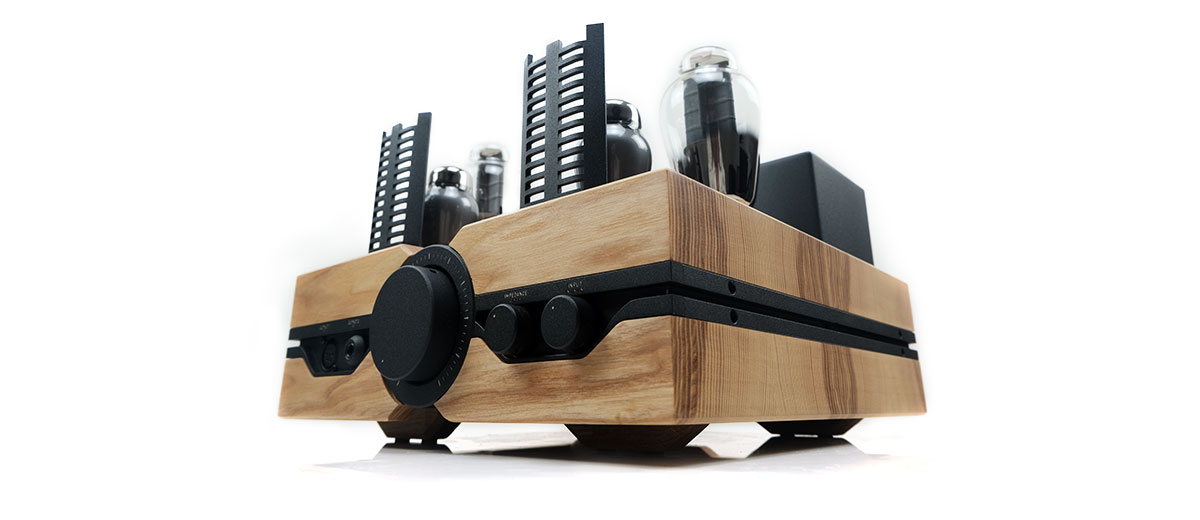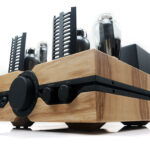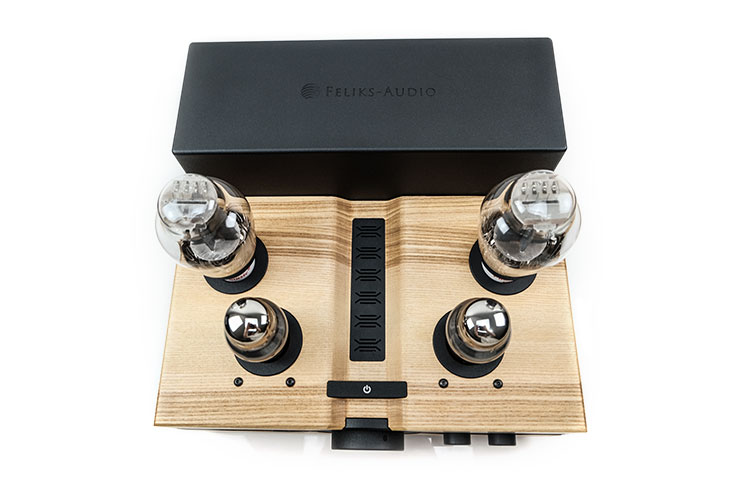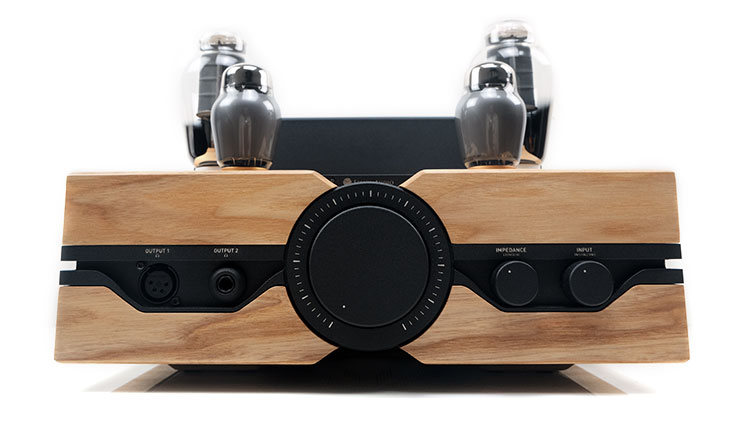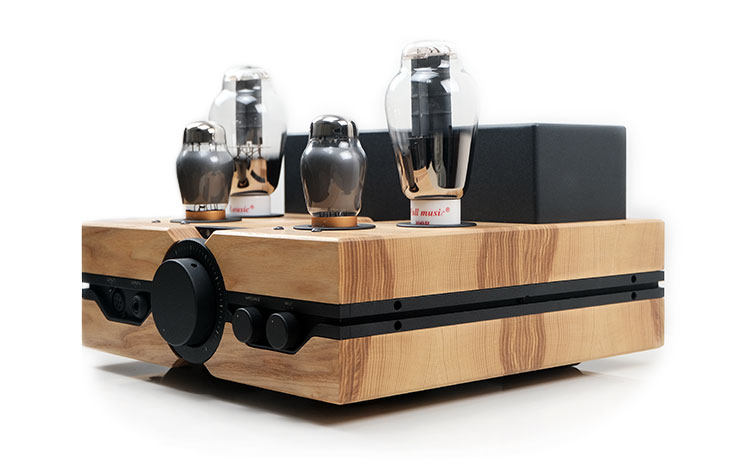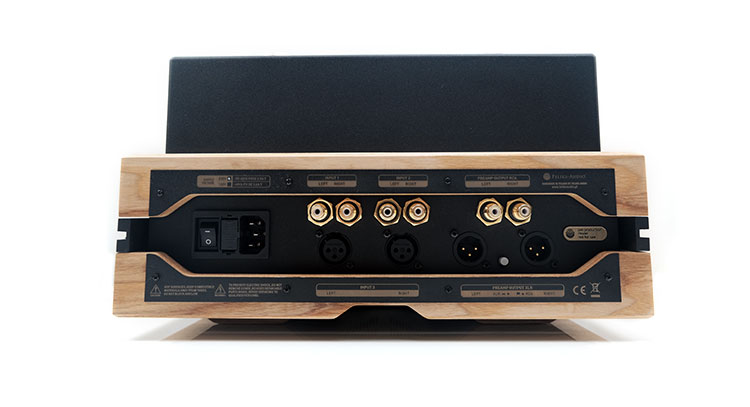Today, we review the Feliks Audio Envy which is a flagship Class A tube headphone amplifier with pre-amp capabilities and up to 8W of output power. It is priced from €6499.
Disclaimer: This was sent to us as a sample for our honest opinion. Headfonics is an independent website with no affiliate links or services. Thank you to Feliks Audio for giving us this opportunity.
To read more about Feliks Audio products featured on Headfonics click here.
Note, that this post follows our latest scoring guidelines which you can read up on here.
Poland’s Feliks Audio has been a regular on our website for the last 6 years with some highly-rated headphone tube amplifiers such as the Elise and the Euforia. However, the launch of the new Envy is by far their most ambitious headphone amplifier to date, and coincidentally my first time reviewing their gear.
The price point is not for the faint of heart starting at €6499 so you can consider the launch a prestige project of sorts and yes, it is their flagship tube headphone amplifier.
However, the Envy is more than just some nice wood panels and a line-up of fancy tube choices. It’s got power, plenty of it also for hard-to-drive headphones that should prove attractive to Susvara fans, and a decent amount of connectivity options to fit right into a decent home system also.
Tech Highlights
Tubes
The Envy is a Class A headphones tube amplifier with a transformer-coupled balanced output and a solid-state rectifier. At the heart of its top-mounted tube configuration are two fairly hefty and not inexpensive H300B power tubes.
Feliks Audio has released two H300B Envy options for a bit of flex in the wallet. The Envy base unit includes two matching Electro Harmonix Gold 300B power tubes and the Performance Edition includes a set of matching ‘gold-grid’ Fullmusic 300B triode power tubes.
In the open market, these tubes cost a fair bit with the Electro Harmonix Gold’s somewhere around $150 for a decent pair and the Full Music versions often $250 or higher depending on the condition. You can roll these of course but the very best upgrades such as Sophia Electric will cost you upwards of $700 to $1500 a pair.
The second pair of tubes on the Envy is a set of double triode PsVane CV-181-T MKII (6SN7) drivers. Again, on the open market, these are not cheap with some quotes for a matched pair at well over $100. With their Teflon base and gold contact pins, they are fairly durable designs with a good contact performance and very low noise levels.
Amplifier
Two important points here, the first is Envy’s single-ended Class A topology for amplification to avoid as much unwanted distortion as possible.
The second is the use of a solid-state rectification design to keep the output tight and punchy avoiding the more traditional tube rectification ‘sag’ or flabby low-end. This is something the Envy does exceedingly well, (more detail in sound impressions on page 2).
The Envy amplifier is made using “point to point” technology meaning each component is directly hard-wired to the next. All the point-to-point wired connections are custom made from a single-crystal copper (UPOCC) with Teflon isolation.
The input side starts with an Alps RK27 potentiometer, followed by a two-stage pre-amplifier with those CV-181-T MKII power tubes and nitrogen-filled Jantzen Superior Z-cap coupling capacitors. Both the output transformers and the mains transformer are custom engineered by Polish-based transformer specialists EDIS Ogonowski.
The amplifier has fully automatic bias and its electrical circuit is a “zero feedback” design. The power tubes are heated with direct current (DC) with a special circuit designed to separate the tubes heating from the audio path power. The power supply for the anode voltage is designed on semiconductors and based on MOFSET transistors and low-noise current sources.
For the XLR balanced outputs, Feliks Audio has used symmetrical audio grade Lundahl transformers with source selection managed by low signal relays placed directly behind the input connectors to reduce the noise floor and potential interference.
Performance Numbers
Headphone Output
For me, this is the headline number from the Envy technical spec sheet. At a high level, the amp is capable of delivering up to 8W of output power and is compatible with a wide range of loads from 8-600Ω.
The amount of power the Envy will release is, in part, controlled by an impedance selector front dial which controls the precise output voltage level. This system is broken down into 3 succinct ranges as follows and notes the voltage quote is without a load. So, for example, the 16V maximum drops to 14V with a 32Ω output:
- Lo – recommended for dynamic headphones with impedance ratings from 16 to 60Ω. 2V max output (no load)
- Mid – recommended for dynamic headphones with impedance ratings from 60 to 300Ω. 9V max output (no load)
- Hi – recommended for dynamic headphones with impedance ratings from 300-600Ω and planars. 16V max output (no load)
So that 8W headline grabber is the maximum amount you can achieve at 16Ω and you can safely expect it to drop down to around 6W for 32Ω and roughly around 4-5W for 50-60Ω headphones. From there, you should expect 0.7W at 100Ω down to 500mW for 600Ω headphones.
Purpose
Primarily this system is designed to manage power in terms of voltage output to match dynamic driver headphones. However, for planar headphones that need a much higher voltage level Feliks recommends the Hi impedance setting for maximum voltage headroom even if the planar headphones have a low impedance output.
Just be warned that these impedance selectors will bump up both the dynamic range and the amount of current on tap. The difference between each range is substantial, even with demanding headphones.
My suggestion is to turn down the potentiometer before moving to a higher impedance setting to avoid potentially damaging your hearing or gear in the process.
Just as a reminder, there is no distinction in the power output between SE and balanced from the Envy. This is a single-ended tube topology for PO output and as such the power balance between both outputs remains the same.
The Envy’s output impedance is primarily for headphones and again it is controlled in part by the impedance selector. It ranges from 3.8Ω on a 32Ω load (lo), to 8.8Ω on a 100Ω load, (mid), and 20Ω on a 600Ω load, (hi).
Pre-Amp/Line out Output
The voltage on Envy’s RCA output can go up to 8V and is regulated via the RJ45 potentiometer so not a fixed line-out. For XLR or the balanced preamp output, the absolute voltage will be double (so up to 16V), as it is measured between the “+” and “-” cables, (for RCA you only have signal and ground).
Speaker Output
One interesting addendum to the output capability of the Envy is the ability for it to power speakers. By selecting the impedance range to “Mid”, you can also use the 6.3mm SE PO to connect speakers with a 16Ω impedance.
The Envy will drive about 5 Watt power of output power and the recommended speak sensitivity should be greater than 94dB. It’s not a huge or powerful amp class but for a small set of bookend speakers for the desktop, it might be quite useful.
Design
The Envy is a looker. It is also fairly big and heavy at 15.1kg but not so big as to give you issues with standard hi-fi racks. The main issue to watch out for when racking the Envy is height as those H300B driver tubes give it a fairly tall profile as well as needing some room to vent.
Personally, I recommend giving it all the space you can height-wise and putting it on the top shelf. It looks beautiful anyhow so middling rack space seems a crime to me.
The aesthetics are primarily two heavily-grained, distinct sets of oiled woodblocks wrapped around a black chassis that ties the blocks together. The wood choice is beautiful and reminiscent of the Auris Audio aesthetic for their amps but just a shade sharper on the edges and cornering.
You can get the amplifier in various wood finishes. The one we have here is the oak edition but there is a darker American walnut for an additional €200.
The anodized metal chassis peaks out via a central thin stripe to the sides but widens to the front with a retro-forties style aesthetic including a huge centrally positioned potentiometer dial. On either side of the dial are the headphone outputs and smaller volume/impedance controls in matching anodized black.
The toroidal transformer is housed in a similar metal black housing to the rear of the Envy and just behind the top-loaded 2 x 2 tube configuration arranged in a trapezoid pattern.
The amp also comes with two matching anodized metal black rail guards which can be securely fashioned with low-profile screws just in front of the driver tubes. I like the guards on personally but it’s entirely optional depending on how you dig the looks.
I/O
The Envy comes with plenty of I/O for multiple DAC inputs and pre-amp outputs. The arrangement is very easy to understand with a clear separation of the analog inputs to the left and the pre-amp outputs to the right. The spacing is good also so cables will not be pushing against each other either.
To the top, you have two analog dual RCA SE inputs and just below a single set of 3-pin XLR analog for receiving balanced line-outs from your source. To the right, the configuration is the same except for outputs with dual RCA SE above and 3-pin XLR balanced below.
Before powering up I would also just quickly check the label above the 3-pin power prong port to make sure your Envy unit is configured for the right AC voltage. The unit is swappable fuse loaded so you can change that when needed though no spare fuse is included with the packaging.
The front panel houses the Alps RK27 potentiometer which is resistive rather than stepped and very smooth in terms of operation. The anodized grippy texture makes it very easy to move and there are plenty of legible white markings to position the dial accurately for volume.
To the left, you have a single 4-pin XLR and a 6.34mm PO for balanced and unbalanced headphone connections with the impedance selector (lo, mid, hi), and the input control to the far right.
Controls
One minor critique of Envy is the power on and power off process. Now, my particular sample did not come with a manual, and yours might so it could well be easily explained there. However, it might be worth mentioning here that the control system for power is not immediately intuitive.
Like many amplifiers, it does have an on/off switch on the rear panel. However, consider this part 1 of turning it on. If you do not see the tubes light up do not panic as Feliks has installed a touch-sensitive bar to complete the final stage of powering the Envy.
You can find this touch-sensitive bar on the top wood panel just above the potentiometer. Simply press it once and everything will light up and then wait the usual 30 seconds for the tubes to be ready.
Packaging & Accessories
If you are used to tube amps then the Feliks Audio packaging should be familiar territory with its huge, reinforced cardboard outer box and scaffolding-like black foam tray on the inside keeping everything safe and secure.
The Envy amplifier itself is also wrapped in an attractive cloth dust sleeve which is worth keeping and maybe using if the amp is not in play for long periods.
The tubes are packaged securely in their own boxes and not pre-installed which is how I like it. They are numbered 1-4 but ironically there is no labeling on the Envy to tell you which socket matches which tube.
Again, a manual might indicate this but it is simple enough for first-time rollers to figure out since the tubes are matched. Simply start on the far left with the driver tubes to the front and the H300B tubes to the rear and you are good to go.
Click on page 2 below for sound impressions and recommended pairings.

